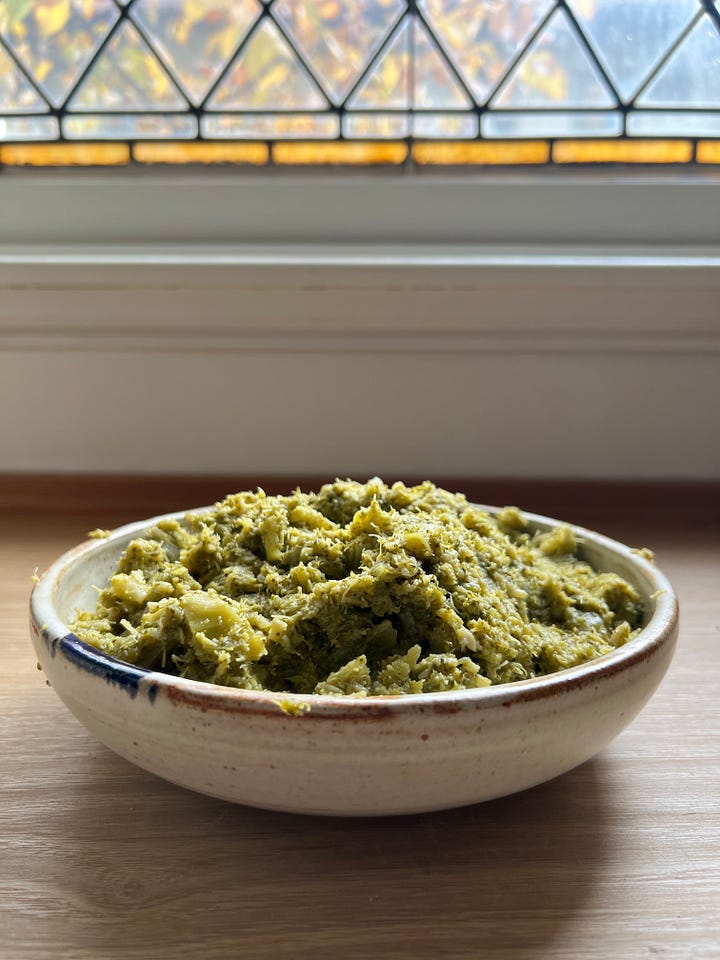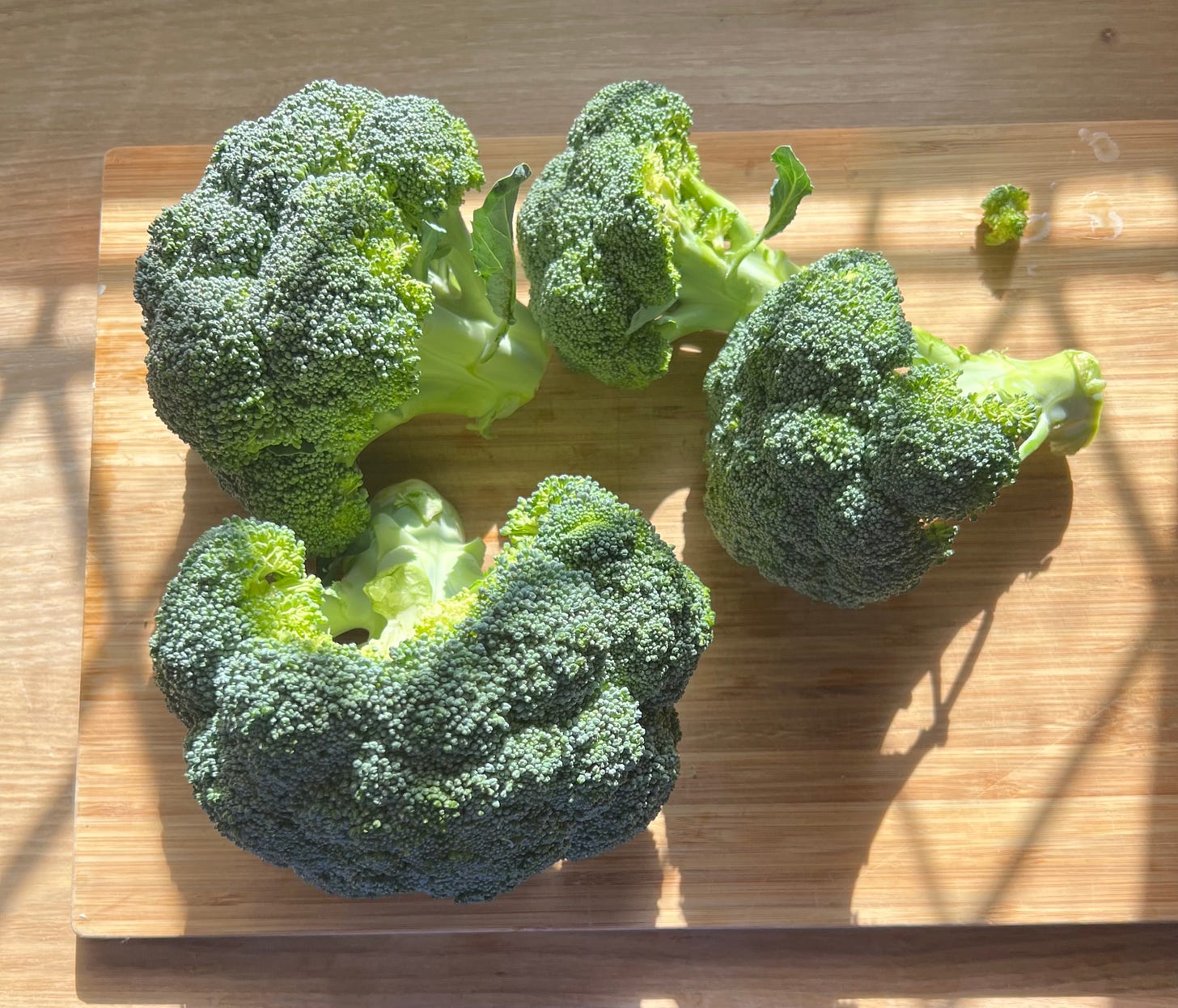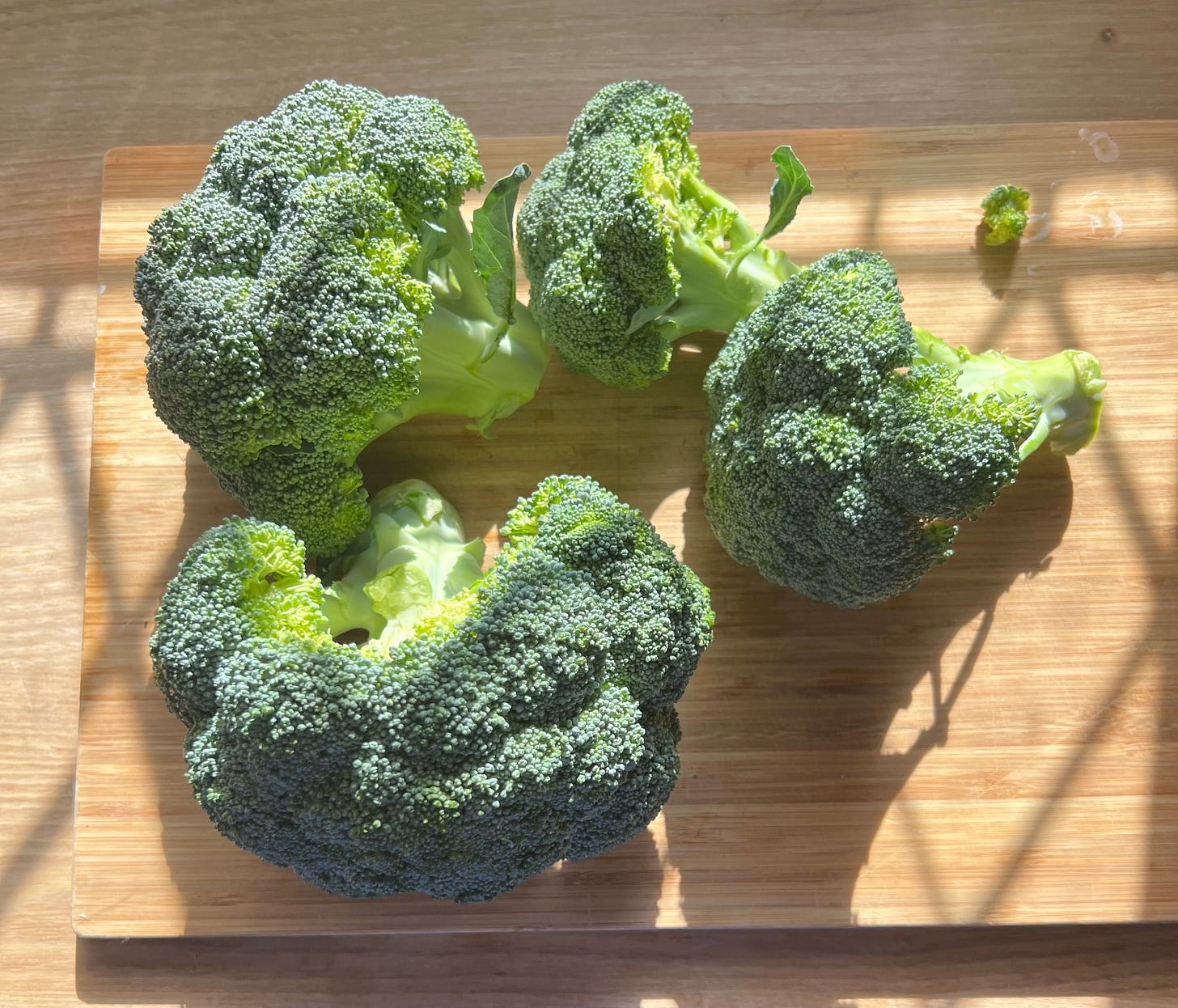Welcome to the Green Spoon!
Cooking simple + delicious food for young kids and their exhausted parents.
Hello! We’re so glad you’re here. We’re Fanny* and Greta**, dear friends with deep backgrounds in sustainable food—who also happened to have had their first kids within a month of each other last year.
As passionate home cooks, seasoned food shoppers, and experienced recipe writers, we couldn’t wait to start cooking for our kids. But when the time came, we were overwhelmed by all of the moving pieces, not to mention an Internet full of conflicting information. Honey contains botulism! Give them all the allergens right away! Gagging is ok! Choking is bad! Salt will kill them! Salt won’t kill them! Even for two people who are confident and competent in the kitchen and at the market, it’s A LOT.
But when we started to explore the options for feeding our babies, we were surprised by how few of the best-practice recipes and off-the-shelf foods were actually tasty. It’s pretty telling that most adults—us included—are more likely to wipe a glob of baby food onto their pants than taste it themselves. We knew these formulations were safe and wholesome, but they just…didn’t taste…good.
So we started to make simple adjustments to our homemade fruit and vegetable purées—and to the store-bought foods we’d use to supplement: we’d add a squeeze of lime on a roasted sweet potato, throw a few leaves of basil into the food processor with steamed carrots, add a pinch of spice to oatmeal, and watch as our kids truly delighted in the experience of tasting food. It wasn’t rocket science—it was all of the same stuff we do to make our own food delicious when we don't have much time—but it made a revelatory difference.
Fig. A. Broccoli, an enemy to many. (The broccoli pesto recipe that made brassica fans of our daughters is included below.)
We continue to be guided by flavor, and now, with toddlers in our arms, we’re in the thick of figuring out how to introduce our kids to more of the world of food while also feeding the rest of our families and, you know, working, and occasionally bathing ourselves. As everyone who has come before us well knows, this is a real challenge, so we’re launching the Green Spoon as a way to explore this conundrum in real time (and to rally a little parental solidarity in the process). It’s our hope that sound nutrition and a focus on flavor lead to a lifetime of openness and enthusiasm at the table. That said, when our kids inevitably hit that picky, I-hate-everything phase, we’ll be proud to commiserate about it here—we all have the best intentions but we can only control so much!
This is a space for the food lovers, home cooks, would-be home cooks and anyone who needs a bit of inspiration and gentle guidance in their family kitchen. It’s for anyone who wants to feel good about what they're cooking for their family—even if it's just one or two wins a week—and those who could benefit from some tips on how to stay energized and engaged for the long haul.
Before we launched the Green Spoon, we asked a bunch of fellow parents about their experience of feeding their kids and the same stuff came up again and again:
Most of the recipes I read online about cooking for kids are so aspirational (and annoying) that I end up feeling like a resentful, failed parent.
I am truly hanging on by a thread time-wise and budget-wise, so I’m intimidated by the idea of doing anything that requires even a minor change to my routine.
I’m in a total rut but I don’t feel creative—I need ideas for delicious and exciting recipes that are actually straightforward and simple.
I really don’t like the idea of separate kids food—and I simply cannot make multiple meals.
I want to do right by the environment in my food choices, but I don’t know how to serve a well-rounded meal without meat—and high quality ingredients are expensive!
How the fuck are other people doing this?!
So in response to all of that, here’s what we’re planning to include in the weekly Green Spooniverse:
Straightforward and delicious recipes that you can shmoosh for your baby and zhuj into a satisfying meal for yourself and your older kids (exhibit A is below)
Food diaries from parents about what they and their kids are truly eating (think Gr*b Street Diet Jr., but please don’t come for us, Vox Media)
Nutrient-rich recipes for babies and toddlers that are actually delicious and yield multiple meals
Breakfast recipes that are either truly easy enough to make on frantic mornings or ones you can prep ahead of time
How to batch prepare a single ingredient and use it in multiple ways over the course of a few days (e.g, a pots of beans, a bunch of grains, a huge roasted squash)
Climate-conscious ingredient lists—we’re talking mostly vegetarian with minimal high quality dairy and some responsibly-sourced fish and meat.
How to resurrect and repurpose leftovers many times without killing any of your loved ones with food-borne illnesses
Interviews with child nutrition experts, pediatricians and other people with impressive degrees who will reassure us that we’re not destroying our children because we gave them cow’s milk too early (or something)
Lists of our favorite baby-friendly pantry staples, essential kitchen equipment, off-the-shelf baby food and snacks we like, and favorite dining accessories
(Are we missing anything? Click here to let us know—we want to make this as useful for you as possible.)
If all or any of that sounds good to you, subscribe! After a few weeks of posting everything publicly, free subscribers will have access to our public posts (about 1x/month) while paid subscribers will get the whole kit and caboodle (4-5 emails/month).
And with that, we’ll leave you to our first recipe below! See you next week.
Fanny + Greta
This recipe is a year-round favorite of ours, thanks to the ready availability of its star ingredient. It has the same texture and (near) universal deliciousness of pesto but is in fact, just good old-fashioned broccoli. Make a big batch and reserve some of the pesto to feed the toothless members of your family, before tossing the rest with a bunch of parmesan and piping hot pasta to feed everyone else. (Chili flakes and anchovies are optional and delicious additions as well.)
Note: this isn’t a recipe to tackle if you’re frantically trying to get dinner on the table right now. It’s a thing to prep ahead—while listening to a podcast, watching a show, talking on the phone, etc.—and keep for those evenings when you do need to make a quick and satisfying dinner for everyone in your house. The pesto keeps for a week in an air-tight container in the fridge (or up to three months in the freezer), and is a great thing to have on hand for all of the quicks meals where pesto shines: last minute pasta dinners, tossed with your grain or bean of choice, or spread on sandwich bread as a very tasty condiment. (Also, due to the green nature of broccoli, this may not be a win for the pickiest eaters but you never know… At the very least, you’ll be able to feel good about eating some of it yourself and freezing the rest for when that picky phase ends, right?)
The Stats
Total time: 1 hour
Active time: 20 minutes (truly)
Passive time: 40 minutes
Yields 4 cups (2 cups will dress 1 lb. of pasta generously)
Essential Ingredients
2 pounds large-headed broccoli
8 cloves garlic (~1 head of garlic. If you’re cooking for a baby with a sensitive stomach, use half)
2 cups water
½ cup mild to medium flavored olive oil (we use California Olive Ranch Medium and Mild everyday extra virgin olive oils for cooking. We also buy gallon jugs of Séka Hills Arbequina extra virgin olive oil which lasts forever and can be used for everything.)
1 lemon
Optional Ingredients
lemon
½ teaspoon red pepper flakes
Salt and pepper
3 salt or oil-packed anchovies
Shorter pasta shapes, like penne or rigatoni (pasta made with legume flours — think lentil or chickpea — tastes great with this too)
Parmesan cheese (Pecorino or Grana Padano work well, too)
Method
Cut off the bottoms of the broccoli stalks so you have the head of florets and 2” of the stem remaining. Coarsely chop the whole thing so the pieces are about ½” big—everything cooks down into a shmush so there’s no need to be precious with cutting the broccoli into uniform pieces. Mince the garlic.
Put the olive oil in a heavy-bottomed pan over low heat and add the garlic. (Heating the oil over higher heat and then adding the garlic is a guarantee for burnt garlic, which will make the whole pesto taste acrid and bitter.) Cook until it begins to smell good and turn lightly golden, about 4-5 minutes, and then add the broccoli and water. Stir to combine the ingredients and turn the heat up to medium. When the water boils, turn the heat down low to a simmer and cover your pan with a lid that fits tightly.
Over the course of the next ~40 minutes, check and stir the broccoli every 10 minutes or so to make sure the water hasn’t evaporated. (Fanny’s lid fit tightly, so she didn’t have to add any additional water. Greta’s lid, on the other hand, is, ahem, not so tight, so she had to add about a ½ cup of water after 20 minutes and another ½ cup ten minutes later.) It’s done when the broccoli—both the florets and the bits of stem—turn into a chunky purée with some pressure from the back of a fork or potato masher. From here, turn off the flame, mash the contents of your pot and proceed to choose your own adventure.


For babies who aren’t doing salt yet. Once the broccoli is done and you’ve mashed it into a purée, remove a few scoops from the pot, add a squeeze of lemon and serve with a spoon, taking pains to shmush any of the larger chunks.
For babies who are doing a little salt and dairy. Once the broccoli is done and you’ve mashed it into a purée, remove a few scoops from the pot and season with a squeeze of lemon, salt and/or parmesan or pecorino. (For a cup of purée, we’d do a pinch of sea salt and 2 tablespoons of parmesan or 1 of pecorino since its saltier.) Serve with a spoon or on very well-cooked pasta that has been cut into appropriately small shapes. (Check Solid Starts for more pasta-serving guidance.)
For kids and adults who aren’t into spice or anchovies. Follow the steps above but add more salt and cheese, to taste. Toss with pasta and serve, garnishing with more freshly grated cheese!
For picky eaters. Remove all traces of broccoli, garlic or even olive oil, honestly. Make pasta and toss with butter and cheese. (But, seriously folks, maybe your picky eater would be game for trying this with only a tiny bit of broccoli and a whole bunch of cheese?)
For those who eat everything. Rinse the anchovy filet if salt-packed, or pat off excess oil (approx. 1 fillet per cup of broccoli) and chop it coarsely together with 1-2 teaspoons of chili flakes. Fold into broccoli pesto and add salt and cheese before tossing with pasta. Serve promptly!
*Fanny is the founder of the lifestyle and kitchenware brand, Permanent Collection, and the author of the culinary memoir, Always Home: A Daughter’s Recipes & Stories (Knopf, 2020). She is the illustrator of, and co-author (along with her mother, pioneering chef and food activist, Alice Waters) of My Pantry. She holds a PhD in art history and writes about art a lot, but her next book—which will also be published by Knopf—is devoted entirely to salad. Ironically, she was so nauseated during her pregnancy that even looking at a leaf of lettuce made her want to vomit.
**Greta is a direct-to-consumer food/beverage veteran, having co-founded the farm-to-table grocery delivery service, Good Eggs and the bottled cocktail Zuzu in 2020. In 2023, she co-authored (with Jake Gyllenhaal) The New York Times Bestselling children’s book, The Secret Society of Aunts & Uncles (published by Feiwel & Friends). Greta has been on the board of the non-profit the Edible Schoolyard Project for over a decade. She eats a mountain of popcorn every day and remains insanely anxious about her daughter choking on food.











As a working Mom of three now-grown kids, this is a fantastic idea, a long time coming. I'm an adept home cook, but faced all of these same challenges in the early aughts. It was my own Mom and her immigrant's attitudes that steered me straight ("Children outside of the US do not end up eating only chicken nuggets"), as well as doing oh-too-much research on my own. I started to write it all down to compile into a book, but the reality of already working full-time in technology prevailed. I'm happy to hear that someone well-known in the food world is now tackling it. We all know that baby food is bland and mushy for good reason, but after the baby is ready to move on (as are Mom & Dad!), there's no roadmap—bravo to you both for tackling this!
Aloha! Can’t wait to devour and prep these recipes for my 4 yo and 18 mos girls